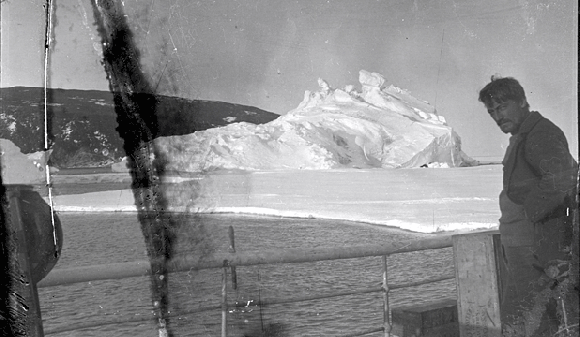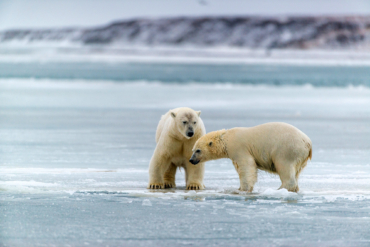The Antarctic Heritage Trust of New Zealand revealed in December it had discovered and conserved photographic negatives left a century ago in a hut used by explorers in Cape Evans, Antarctica.

The cellulose nitrate negatives, discovered clumped together in a small box, are from the Ross Sea Party of Ernest Shackleton’s 1914-1917 Imperial Trans-Antarctic Expedition.
The epic attempted crossing of Antarctica became known as the Endurance Expedition and is one of the most harrowing tales of survival from the Heroic Age of Antarctic exploration.
(The abbreviated story — The expedition had two prongs: the Ross Sea Party was the supporting cast, meant to resupply the Weddell Sea Party’s depots for the crossing. Things didn’t go well for either group. The Ross Sea Party spent time living in the hut left by another expedition (see below) after being stranded on Ross Island because their ship, Aurora, was torn from its mooring by a storm. At the same time, Shackleton and five others from the Weddell Sea Party undertook an 800-mile, open-boat epic after his other ship, Endurance, was crushed by sea ice. Every man in the Weddell Sea Party survived while three Ross Sea Party members died.)

The negatives, recovered by the trust in 2013, have been painstakingly conserved to reveal never-before-seen Antarctic images.
Photographic conservator Mark Strange separated, cleaned, removed mold, and consolidated the cellulose nitrate image layers.
Twenty-two separate sheets were revealed and sent to New Zealand Micrographic Services for scanning using a Lanovia pre-press scanner. The digital scans were converted to digital positives.

Although many of the images are damaged, Antarctic Heritage Trust personnel were able to recognize landmarks around McMurdo Sound. The identity of the photographer remains unknown.

“It’s an exciting find and we are delighted to see them exposed after a century. It’s
testament to the dedication and precision of our conservation teams’ efforts to save Scott’s Cape Evans hut,” said Nigel Watson, Antarctic Heritage Trust’s Executive Director.
The hut in which the negatives was found was first used by Captain Robert Falcon Scott during his final, ill-fated Terre Nova Expedition to Antarctica (1910-1913). Scott reached the Pole during that expedition, but he and his party died during the return trip. Shackleton’s expedition made use of the hut in later years.
The Trust has found a lot of cool artifacts. In 2010 they discovered three crates of whiskey and two crates of brandy under Ernest Shackleton’s 1908 base during conservation work.






